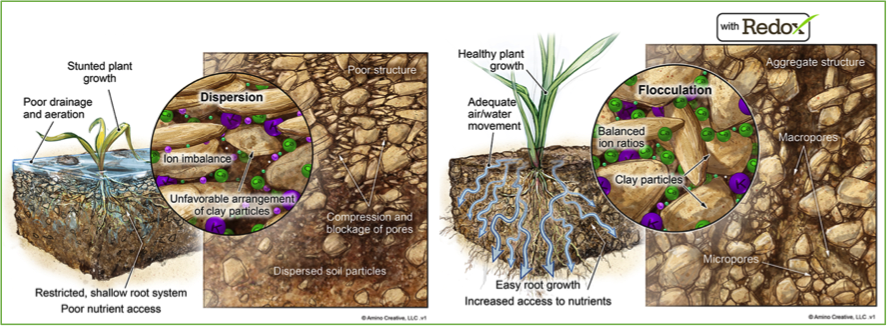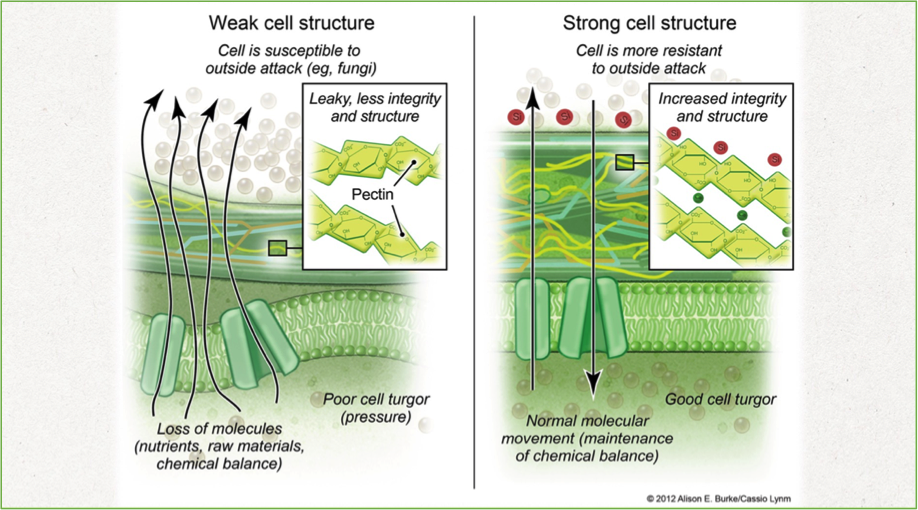The role of calcium in both soil structure and plant nutrition
Related Articles
The role calcium plays in sports turf management is vital – in particular the form that is supplied, explains Michael Fance, European Technical Manager for Aquatrols.
Calcium plays a critical role in turf health and quality. To understand its function and role in agronomy, it should be understood from a soil point of view as well as from a plant point of view. It is critical that the soil calcium level is constant and consistent throughout the growing season in order to maintain soil structure. It is equally critical that calcium plant nutrition be addressed early and adequately.
Soil structure
Calcium in soils comes in many forms but is present in most soils as insoluble calcium carbonate (CaCO3-). It is a common perception that most established sports turf situations possess adequate levels of phosphorous, however, it needs to be understood that much of this phosphorus could be tied up with ionic calcium to form insoluble calcium phosphate (CaPO4); rendering both minerals unavailable to the grass plant. Only available ionic calcium (Ca++) is able to affect soil structure.
The divalent positive charge of ionic calcium interacts with negatively charged soil colloids to create soil flocculation. Structure is influenced in the micropore spaces of the soil within which both air and water exchange are both taking place. Since much of the calcium is in the form of insoluble calcium carbonate or calcium phosphate, it is important to manage soil biology and soil chemistry so that these insoluble calcium compounds may be broken to free-up ionic calcium.

Poor soil structure v good soil structure
Plant nutrition
Plant available calcium is essential for turf nutrition, health and quality but it can only be absorbed in its ionic form. Calcium plays several critical roles in plant nutrition; namely root growth, cell wall structure, membrane stabilisation and function, and plant cell signalling. Let’s consider two of those.
Root growth
In the absence of soil solution calcium, root growth will cease. Calcium is critical for root cap formation and strength, and thus for root growth and development. Directly behind the root cap is the zone of highly active cell division that actually promotes root growth. As calcium is critical in cell structure and membrane stability, the soil solution concentration of calcium will determine root growth and root system development.

Cell wall structure
The majority of plant calcium is found in the plant cell walls, mainly in the outer portion of the plant cell wall. Pectin is a structural carbohydrate in plants. Plants higher in calcium will form calcium pectate. Calcium pectate is the main form of pectin in plant cell walls. The amount of calcium and calcium pectate in cell walls directly affects the form and function of the plant cell wall. Plants high in calcium pectate will have improved cell wall structure and will be less susceptible to invasive fungal diseases and insects.
How to influence calcium nutrition
To study calcium agronomically is to study both soil and plant. You cannot have adequate soil ionic calcium for improved soil structure without plant influence and soil biology. Conversely you cannot have adequate plant calcium nutrition without proper soil structure. It is critical that, from an agronomic perspective, action is taken to improve soil biology to maintain adequate soil structure and plant available calcium.
Within the Aquatrols portfolio we have two products containing plant-available calcium; TurfRx Ca and TurfRx Si. The particular manufacturing process involved in achieving this is called microencapsulation. It uniquely results in tank-mixable and soil-stable calcium thus preventing calcium tie-up and allowing this critical mineral to be transported to soil micropores. It is in these micropores that calcium is influential in improving soil structure. Microencapsulation is also important in calcium plant nutrition. As the plant absorbs water, it also absorbs the minerals within that water. Microencapsulated calcium is able to be absorbed into plant roots via water transpiration. Once inside the plant, the microencapsulation breaks down and ionic calcium is delivered to the plant for utilisation in its associated metabolic processes.

The unique Redox microencapsulation process sees the fusion of the calcium mineral ion within a surfactant molecule to eliminate negative soil reactions. Isolating the calcium from the carbonate and encapsulating it within the surfactant molecule enables it to be delivered to where it is required. The role that calcium plays in sports turf management regarding both soil structure and plant nutrition is well known. What tends to be less well known is that the form of calcium that is supplied into the situation is critical and hopefully this article has clarified that.

Visit: eu.aquatrols.com/Redox

























